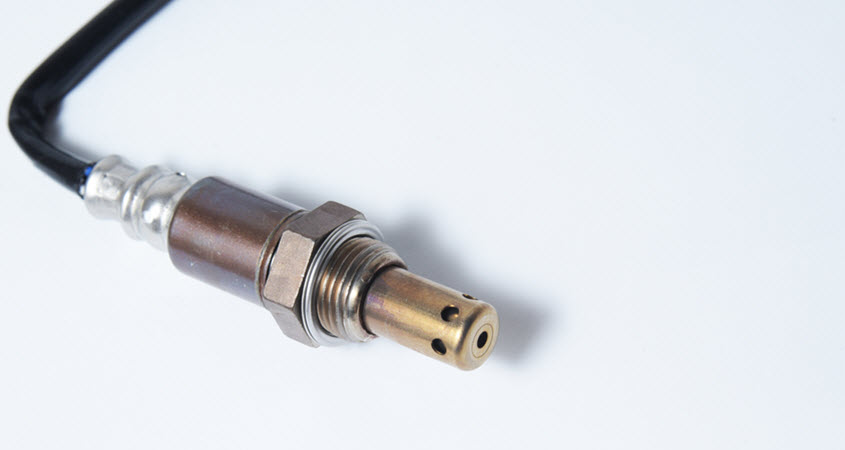Your Audi is a marvel of modern engineering, and its performance relies on a complex interplay of sensors and components. One such critical component is the oxygen sensor, often overlooked but essential for your vehicle’s efficiency and emissions control. In this article, we will delve into the world of Audi’s oxygen sensor, uncovering how it works, recognizing signs of failure, understanding the reasons behind its failure, and exploring how a skilled mechanic can rectify the issue to keep your Audi running smoothly.
Understanding the Audi Oxygen Sensor
The oxygen sensor, also known as the O2 sensor, is a small but pivotal component in your Audi’s exhaust system. Its primary function is to monitor the amount of oxygen in the exhaust gases and provide real-time feedback to the engine control unit (ECU). This feedback allows the ECU to adjust the air-fuel mixture, optimizing combustion and, subsequently, performance and emissions. Here’s how the oxygen sensor works:
- Measuring Oxygen Levels: The oxygen sensor measures the concentration of oxygen in the exhaust gases. It is usually placed in the exhaust manifold, downstream from the engine, or closer to the catalytic converter. There are typically two types of oxygen sensors in modern vehicles: the upstream (pre-catalytic converter) and the downstream (post-catalytic converter) sensors.
- Voltage Output: The oxygen sensor generates a voltage signal that fluctuates between a high voltage (rich mixture) and a low voltage (lean mixture) based on the oxygen content in the exhaust. When the fuel mixture is rich (excess fuel), the oxygen sensor produces a low voltage signal, and when it’s lean (excess oxygen), it produces a high voltage signal.
- ECU Feedback: The ECU continuously monitors the oxygen sensor’s voltage output and adjusts the air-fuel mixture accordingly. This feedback loop helps your Audi’s engine run efficiently and ensures that emissions are within acceptable limits.
Watch for These Warning Signs of Oxygen Sensor Failure
When the oxygen sensor malfunctions, it can have a significant impact on your Audi’s performance and emissions. Here are common signs of a failing oxygen sensor:
- Check Engine Light: The most obvious sign of an oxygen sensor problem is the illumination of the check engine light on your dashboard. The ECU detects an issue with the sensor’s performance and triggers the warning light.
- Reduced Fuel Efficiency: A failing oxygen sensor can lead to an imbalanced air-fuel mixture, causing reduced fuel efficiency. You may notice a drop in your Audi’s miles per gallon (MPG).
- Rough Idling and Misfires: Inaccurate oxygen sensor data can result in erratic idling and engine misfires, affecting the overall smoothness and performance of your Audi.
- Emissions Problems: A malfunctioning oxygen sensor can lead to increased emissions. This not only harms the environment but can also result in your Audi failing emissions tests, where applicable.
- Poor Acceleration: Your Audi may struggle to accelerate smoothly or provide the power you expect when the oxygen sensor is failing.
Common Causes of Oxygen Sensor Failure
Understanding why oxygen sensors fail can help you prevent issues or address them promptly. Common causes of oxygen sensor failure include:
- Fuel Additives: Some fuel additives may contain substances that can harm the oxygen sensor. It’s essential to use recommended or high-quality fuels and additives.
- Age, Wear, and Exposure: Like many components, oxygen sensors have a finite lifespan. Over time, the sensor’s internal components can degrade, reducing its accuracy and responsiveness.
- Contaminants: Exposure to oil, coolant, or other contaminants can damage the sensor. This can occur due to a malfunctioning engine component, such as a leaking valve stem seal or head gasket.
- Carbon Buildup: Carbon and soot deposits can accumulate on the sensor’s surface over time, interfering with its ability to measure oxygen levels accurately.
- Overheating: Extreme engine temperatures, often caused by overheating or exhaust system issues, can damage the sensor’s internal components.
How Our Mechanic Will Help Your Audi
Our mechanic will use diagnostic tools to retrieve error codes from your Audi’s ECU. These codes can help pinpoint the specific sensor or system that’s causing the problem. Our mechanic may perform a visual inspection of the oxygen sensor and the surrounding exhaust components to check for physical damage, leaks, or contamination.
To confirm if the oxygen sensor is faulty, our mechanic may conduct electrical tests to measure the sensor’s voltage output and response time. If the oxygen sensor is confirmed to be faulty, the mechanic will proceed with its replacement. Audi owners have the option to choose between an OEM (Original Equipment Manufacturer) sensor or an aftermarket one, depending on their preferences and budget. The new oxygen sensor will be installed, and all electrical connections will be secured. It may also require calibration and programming to ensure accurate readings and proper communication with the ECU.

Kruse Lucas Imports for Your Audi’s Repairs and Maintenance
A well-functioning oxygen sensor is essential for your Audi’s performance and emissions control. By understanding how it works, recognizing signs of failure, and being aware of common causes of malfunction, you can take steps to prevent issues and address them promptly. Also, regular maintenance and attention to sensor health will keep your Audi running smoothly for years to come, so visit us from nearby Manteca, Oakdale, Ripon, Turlock, and Modesto, CA.
 525 Tully Road
525 Tully Road (209) 529-9111
(209) 529-9111

